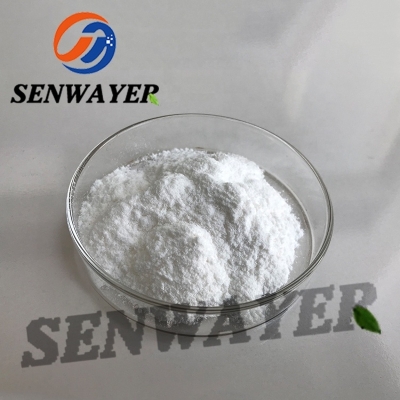Comparative analysis of the influence of printing ink on the composite fastness of composite membrane materials
-
Last Update: 2018-03-26
-
Source: Internet
-
Author: User
Search more information of high quality chemicals, good prices and reliable suppliers, visit
www.echemi.com
Abstract: the composite fastness is an important performance index of composite membrane materials, which has a close impact on its performance There are many factors that affect the composite fastness In this paper, by testing the peel strength of printing parts of different color inks of plastic composite film, the influence of different color inks on the composite fastness of samples is compared and analyzed, and through the test principle and equipment XLW (EC) The introduction of the parameters, application scope and test process of the intelligent electronic tensile testing machine provides reference for the monitoring and analysis of the composite fastness of composite film packaging materials in enterprises Key words: composite fastness, peel strength, printing ink, plastic composite film, intelligent electronic tensile testing machine, composite film material 1 Meaning composite film material is to composite single-layer films of different materials together by adhesive, so as to give full play to the excellent performance of each single-layer film and meet the quality requirements of the packaged products Taking the aluminum-plastic composite film PET / Al / PE as an example, three kinds of single-layer film materials play different roles in the composite film PET film acts as a printing layer, Al mainly acts as a barrier, and PE film is a heat sealing layer Because of the defects such as creases and pinholes on the surface of Al, pet and PE film also play a protective role in the Al layer If the composite fastness between the layers is low and easy to layer, the protective effect of the plastic film layer on the aluminum foil layer will be weakened When it is squeezed and rubbed, the aluminum foil will be easily damaged, which will affect the overall barrier performance of the composite film material In addition, the low composite fastness will also affect the mechanical properties of the whole package, such as impact resistance and puncture resistance Therefore, the appropriate composite fastness is the premise to ensure that the performance of the composite film can reach the expected value There are many factors that affect the composite fastness of composite membrane materials, such as the type of adhesive, the distribution ratio of each group, the amount of glue, composite process parameters, ink, etc This paper focuses on the comparative analysis of the influence of different colors of ink on the composite fastness Fig 1 various composite membrane materials 2 The test is generally characterized by peel strength according to the composite fastness In this paper, the peel strength of samples is tested according to GB 8808-1988 "peel test method of soft composite plastic materials" 3 In this test, the plastic composite film composed of two layers of film is selected as the test sample The surface of the sample contains three printing areas with different colors of ink 4 In this paper, XLW (EC) intelligent electronic tensile testing machine is used to test the peel strength of samples, which is independently developed and produced by Jinan Languang Electromechanical Technology Co., Ltd Fig 2 test principle of XLW (EC) intelligent electronic tensile tester 4.1 this paper analyzes the influence of different inks on the composite fastness of samples by testing and comparing the peel strength of different color printing areas on the surface of samples The force value required to separate the composite layers of the unit width sample is the peel strength During the test, the upper and lower clamps of the equipment hold the two ends of the peel part of the sample respectively, and the upper clamp moves upward to pull the sample for peeling The force value and displacement change generated during the peeling process are monitored in real time by the force value sensor and displacement sensor configured by the upper clamp, so as to obtain the peel strength of the sample 。 4.2 equipment parameters are available in two specifications of 500N and 50N, and the test accuracy is better than level 0.5, which effectively ensures the accuracy of test results It supports the two-way test mode of tension and compression Under the two test modes, the test speed can be from 50mm / min, 100mm / min, 150mm / min, 200mm / min, 250mm / min, 300mm / min, 500mm / min In the seven modes, it can be set arbitrarily; the pneumatic clamp can effectively prevent the sample from slipping; the travel of the clamp is 950 mm; through intelligent configuration such as limit protection, overload protection and automatic return, it can protect the user's operation safety; more than 100 different sample clamps are configured for the user's choice, which can meet more than 1000 requirements According to different testing materials, we can provide customized services 4.3 scope of application (1) XLW (EC) Intelligent electronic tensile testing machine is suitable for peeling, stretching, deformation, tearing, heat sealing, adhesion, puncture force, opening force and tearing of plastic film, composite material, soft packaging material, plastic hose, adhesive, adhesive tape, adhesive, medical paste, release paper, protective film, combination cover, metal foil, diaphragm, back plate material, non-woven fabric, rubber, paper and other products Force, low speed unwinding force, peeling force, drawing force and other performance tests (2) XLW (EC) intelligent electronic tensile testing machine conforms to nearly 30 domestic and foreign standards such as GB 8808, GB / T 1040.1 ~ GB / T 1040.4, GB / T 1040.5, GB / T 4850, GB / T 12914, GB / T 2790 ~ GB / T 2792, QB / T 2358, ISO 37, ASTM D 3330, ASTM F 904, etc 5 During the test (1) cut 5 samples with a width of 15.0 mm and a length of at least 10 cm from different colors on the sample surface in the same direction (2) Condition adjustment: place the cut sample in 23 ± 2 ℃, 45% - 55% environment for 4 hours (3) Pre peel approximately 3 cm from one end of each specimen (4) Set parameters: in the control software of the test equipment, the equipment test speed (300 mm / min), sample width, sample name and other parameter information (5) Clamp sample: take one of the samples, clamp the two layers of materials peeled from the pre peeled part in the upper and lower clamps of the equipment, so that the longitudinal axis of the peeled part coincides with the central line of the two clamps, click the test option, the upper clamp moves upward according to the set speed, and the samples are peeled off (6) At the end of the test, the equipment displays the measured peel strength value Repeat until all specimens have been tested 6 Test results the peel strength of the samples in different color areas measured in this test is the average value of the test results of five samples in each area The peel strength of the unprinted area, namely the transparent area, is 1.036 n / 15mm, the peel strength of the white printing area is 0.887 n / 15mm, and the peel strength of the yellow printing area is 0.571 n / 15mm 7 Conclusion Factors such as printing process, ink quality and compatibility with adhesive will affect the composite fastness in the printing area of composite film materials In this test, the peel strength of plastic composite film samples in different color areas is tested The test operation is simple, the intelligent degree of the equipment is high, and the force value in the test process can be clearly and intuitively displayed The test results show that it is not printed The composite fastness of the area Zui is good, followed by white printing area and yellow printing area This phenomenon may be related to the different compatibility of different color ink and adhesive Jinan Languang mechanical and Electrical Technology Co., Ltd is a high-tech enterprise specializing in the research and development of packaging testing equipment, production and packaging testing services, which can provide testing equipment and services for packaging material performance research and quality control The more you understand, the more you trust! Labthink is looking forward to enhancing technical communication and cooperation with enterprises and institutions in the industry
This article is an English version of an article which is originally in the Chinese language on echemi.com and is provided for information purposes only.
This website makes no representation or warranty of any kind, either expressed or implied, as to the accuracy, completeness ownership or reliability of
the article or any translations thereof. If you have any concerns or complaints relating to the article, please send an email, providing a detailed
description of the concern or complaint, to
service@echemi.com. A staff member will contact you within 5 working days. Once verified, infringing content
will be removed immediately.







